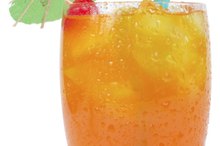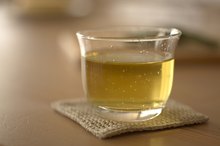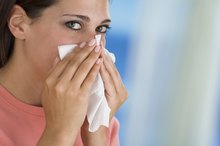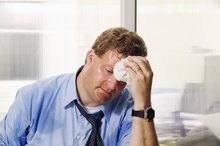What does fact checked mean?
At Healthfully, we strive to deliver objective content that is accurate and up-to-date. Our team periodically reviews articles in order to ensure content quality. The sources cited below consist of evidence from peer-reviewed journals, prominent medical organizations, academic associations, and government data.
The information contained on this site is for informational purposes only, and should not be used as a substitute for the advice of a professional health care provider. Please check with the appropriate physician regarding health questions and concerns. Although we strive to deliver accurate and up-to-date information, no guarantee to that effect is made.
What Are the Treatments for Facial Flushing?
Facial flushing is the sudden and mostly short-lived reddening of your face and neck. The causes of facial flushing are many. A sunburn, a fever, chronic rosacea--a type of inflammatory skin disease-- and hot flashes can all cause your face to temporarily flush. The treatments for facial flushing depend on the cause, but in many cases include cooling of your skin.
Cool Off
Facial flushing can occur when your body temperature rises above normal. Situations that can produce flushing are a fever, a sunburn and a hot flash. Taking an over-the-counter non-steroid anti-inflammatory medicines such as acetaminophen or ibuprofen can bring down a fever and relieve the pain associated with a sunburn. As your body temperature drops, you most likely will notice your face returning to its normal coloring.
Hot flash-related flushing may be more challenging to treat. The North American Menopause Society suggests removing layers of clothing, using a fan, drinking cool beverages and speaking to your doctor about either herbal treatment or hormone replacement therapy to control hot flashes and the associated symptoms, such as facial flushing 3.
- Facial flushing can occur when your body temperature rises above normal.
- The North American Menopause Society suggests removing layers of clothing, using a fan, drinking cool beverages and speaking to your doctor about either herbal treatment or hormone replacement therapy to control hot flashes and the associated symptoms, such as facial flushing 3.
Adjust Your Diet
Why Does My Face Go Red After Eating & When Its Hot?
Learn More
Experimenting with a food journal might help treat your facial flushing, especially if you suffer from rosacea or flushing induced by menopause. Rosacea is an incurable, but manageable chronic skin condition. According to the National Institutes of Health, some people who have rosacea experience flare-ups when they eaten certain foods--spicy food, caffeine and alcohol are common triggers, but you might have other dietary triggers as well. Post-menopausal women who experience facial flushing and night sweats should also avoid these substances, as they can both raise your body temperature and act as overall irritants.
- Experimenting with a food journal might help treat your facial flushing, especially if you suffer from rosacea or flushing induced by menopause.
- According to the National Institutes of Health, some people who have rosacea experience flare-ups when they eaten certain foods--spicy food, caffeine and alcohol are common triggers, but you might have other dietary triggers as well.
Manage Stress
Reducing your stress can help control facial flushing that stems from both rosacea and hot flashes. Both of these conditions can be exacerbated by stress. Deep breathing, yoga and and any other type of relaxation exercise that calms you might be the key to minimizing your flushing.
- Reducing your stress can help control facial flushing that stems from both rosacea and hot flashes.
- Deep breathing, yoga and and any other type of relaxation exercise that calms you might be the key to minimizing your flushing.
Seek Medical Treatment
What Causes Sticky Perspiration?
Learn More
Seek medical attention if you do not know the source of your facial flushing. One rare, but serious disease called carcinoid syndrome is characterized in part, by a red discoloration of the face 1. Carcinoid syndrome is a condition in which cancerous tumors grow in your lungs or digestive tract, and cause your blood vessels to dilate 1. Surgical removal of the tumors and chemotherapy may be required to control the disease.
Related Articles
References
- Medline Plus: Carcinoid Syndrome
- Medline Plus: Rosacea
- North American Menopause Society: The Changing Body
- Hannah-Shmouni F, Stratakis CA, Koch CA. Flushing in (neuro)endocrinology. Rev Endocr Metab Disord. 2016;17(3):373–380. doi:10.1007/s11154-016-9394-8
- American Cancer Society. Tests for gastrointestinal carcinoid tumors.
- Rubin de Celis Ferrari AC, Glasberg J, Riechelmann RP. Carcinoid syndrome: update on the pathophysiology and treatment. Clinics (Sao Paulo). 2018;73(suppl 1):e490s. doi:10.6061/clinics/2018/e490s
- The Carcinoid Cancer Foundation. A review of carcinoid dancer.
Writer Bio
Erica Roth has been a writer since 2007. She is a member of the Society of Professional Journalists and was a college reference librarian for eight years. Roth earned a Bachelor of Arts in French literature from Brandeis University and Master of Library Science from Simmons College Graduate School of Library and Information Science. Her articles appear on various websites.








